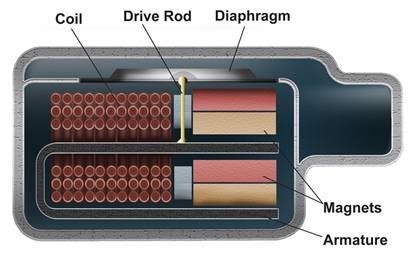coffeecupman
New Head-Fier
- Joined
- Feb 27, 2007
- Posts
- 11
- Likes
- 14
Hello,
First time poster, big admirer of this board. I'm an audiophile who is about to break into portable audio. I'm often in noisy environments and so I want to go in-ear. I don't have any qualms about spending big money on headphones, as usually I find you get what you pay for.
However, I am shocked at what I am noticing as I read the specs for the best of the best in-ear monitors. The Ultimate Ears frequency response drops off beyond 16kHz. And I mean DROPS OFF. As I look around. Sensaphonics? Nearly the same. Westone ES3? Up to 18k now, and it looks like the only ones that go to even 19kHz are the Shures.
Can someone explain why the high end in-ear phone manufacturers aren't delivering the full bandwidth of even the limited CD range of 20-20k? Before anyone says "you can't hear it", know in advance that I disagree. I am a great believer in wide bandpass systems and even if many people can't sense above 19k, 16k is taking it a bit too far. There is a lot of information on recordings from 16k-20k. Heterodyne frequencies beat within the audible range, and are a part of that "being there" feeling.
I just think it's strange that in-ear manufacturers seem to have all agreed to let the highs fall off. This is peculiar to the in-ear market. Over-ear phones wouldn't go below 20k, and loudspeaker manufacturers wouldn't either. Why is it acceptable for in-ears? I am suspicious that there is some science here that I'm missing out on, since it is such a family-wide specification.
And no, I'm not obsessed with specifications. The listening is obviously the final word. But missing information is missing information, and that goes against my principles as an audiophile trying to get everything that was on the master tape into my ears.
All the best, and looking forward to your thoughts and comments,
ccm
First time poster, big admirer of this board. I'm an audiophile who is about to break into portable audio. I'm often in noisy environments and so I want to go in-ear. I don't have any qualms about spending big money on headphones, as usually I find you get what you pay for.
However, I am shocked at what I am noticing as I read the specs for the best of the best in-ear monitors. The Ultimate Ears frequency response drops off beyond 16kHz. And I mean DROPS OFF. As I look around. Sensaphonics? Nearly the same. Westone ES3? Up to 18k now, and it looks like the only ones that go to even 19kHz are the Shures.
Can someone explain why the high end in-ear phone manufacturers aren't delivering the full bandwidth of even the limited CD range of 20-20k? Before anyone says "you can't hear it", know in advance that I disagree. I am a great believer in wide bandpass systems and even if many people can't sense above 19k, 16k is taking it a bit too far. There is a lot of information on recordings from 16k-20k. Heterodyne frequencies beat within the audible range, and are a part of that "being there" feeling.
I just think it's strange that in-ear manufacturers seem to have all agreed to let the highs fall off. This is peculiar to the in-ear market. Over-ear phones wouldn't go below 20k, and loudspeaker manufacturers wouldn't either. Why is it acceptable for in-ears? I am suspicious that there is some science here that I'm missing out on, since it is such a family-wide specification.
And no, I'm not obsessed with specifications. The listening is obviously the final word. But missing information is missing information, and that goes against my principles as an audiophile trying to get everything that was on the master tape into my ears.
All the best, and looking forward to your thoughts and comments,
ccm



